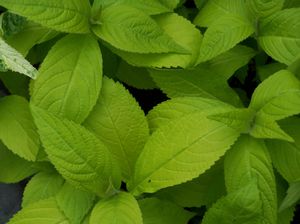View All Plants :: View All SHADE PERENNIALS :: View All SUN PERENNIALS
Leucoseptrum japonicum 'Golden Angel'
Japanese Shrub Mint
Plant Type:
SHADE PERENNIALSLeucoseptrum japonicum ‘Golden Angel’ – 'Golden Angel' is a gold-foliaged form with narrower leaves than the species. Narrow feathery flower spikes are white flushed with lavender-pink occurring late season. Byron W. from Long Island tells us that they are very good late season bee plants. In autumn these may arrive pruned.
Characteristics and Attributes for Leucoseptrum japonicum 'Golden Angel'
Season of Interest (Flowering)
- Late Summer / Autumn
Season of Interest (Foliage)
- Spring / Summer / into Autumn
Nature Attraction
- Deer Resistant
Light
- Sun Tolerant
- Dappled Shade
Attributes
- Edging
- Rock Garden
- Specimen
- Accent
Growth Rate in the Garden
- Medium
Soil
- Draining
- Fertile
Origins
- Garden Origin
Propagated By
- Cutting Grown
Genus Overview: Leucoseptrum
Common Name: Japanese Shrub Mint
Leucoseptrum stellipilum. This is a curious late-blooming clump forming mint relative. Note that I said "clump"; it harbors none, zilch, zero of the aggressive tendency to tenaciously dominate an area. With large and showy feather flowers they make a striking statement at the end of the growing season. Though hardy in USDA zone 5 we have determined that our growing season is not quite long enough to support the flowering event, at least in most years. The Japanese Shrub Mint all by itself gives me zone envy! They make interesting contrast plants in the late season garden. And the variegated, silver and gold-leaved forms provide lovely contrasting foliage to other garden compatriots all through the growing season. In the north site in full sun planted in fertile soil. Farther south they will be perfectly content in some open to dappled shade conditions; after all, Leucoseptrum originates in Japanese woodlands. Better in gardens with a longer growing season I expect that it would do nicely on Cape Cod with their moderated extended autumns and certainly does well on Long Island and southward. In fact, Byron W. from Long Island tells us that they are very good late season bee plants there. That's always good new! Cutting grown. We offer 2 separate species with associated cultivars, Leucoseptrum stellipilum and L. japonicum.


